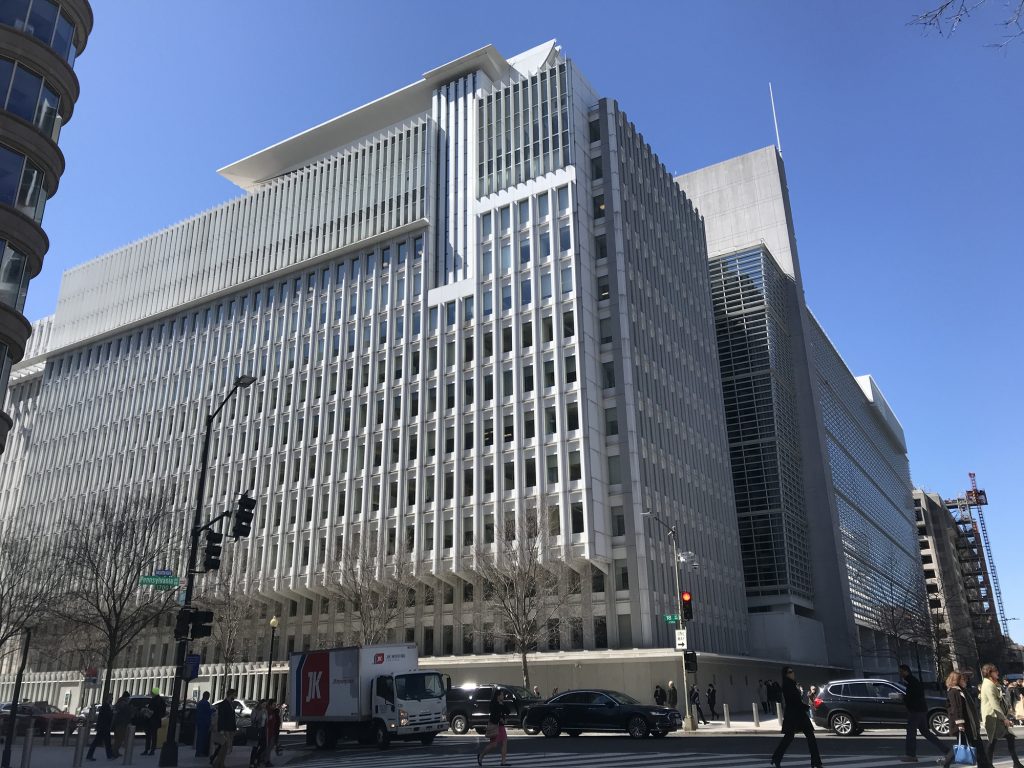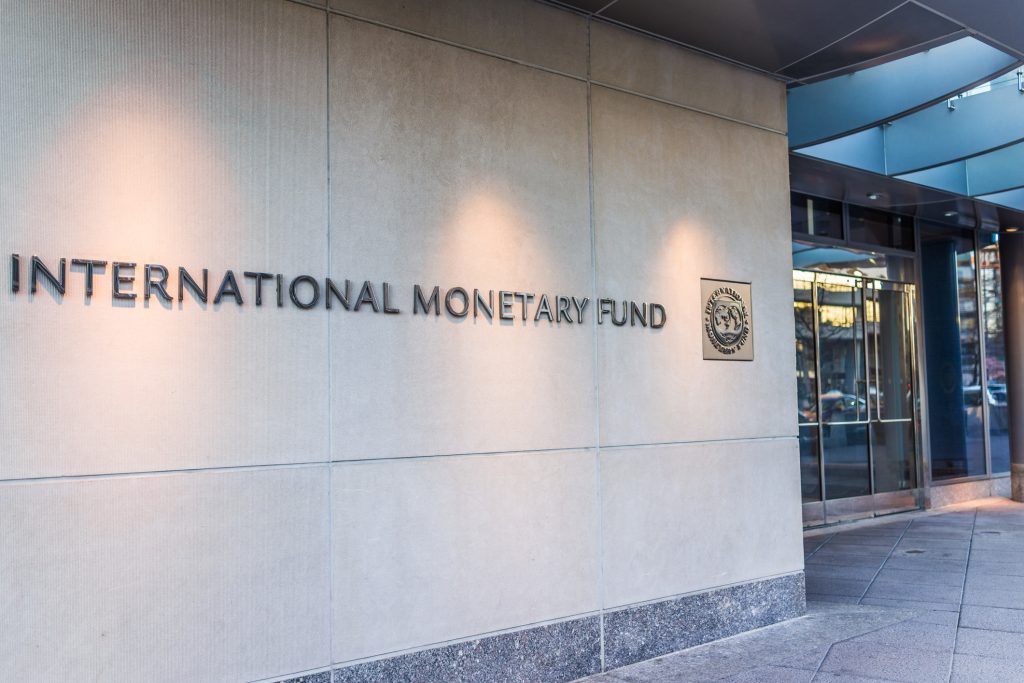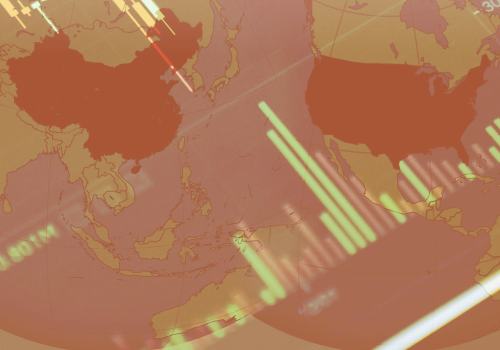Less is more: Fewer reports would improve the IMF’s global surveillance
Table of contents
Background: The changing face of macroeconomics
Assessing the IMF’s recent surveillance
How successful was IMF surveillance?
Introduction
Mike Mussa, the chief economist of the International Monetary Fund (IMF) from 1991 to 2001 once said to me, “the job of the IMF is to manage crises and we have managed to have a lot of them.” Mike loved quips but this one also said a great deal about his views on the IMF. To most people, the IMF’s major role is lending to countries, which constitutes managing crises. Mike focused more on the evolution and risks to the global economy and advising policy makers how avoid bad outcomes, or managing to not have a lot of crises. In IMF parlance, this is surveillance.1The IMF website defines surveillance as “monitoring the international monetary system (IMS) and global economic developments to identify risks and recommend policies for growth and financial stability”.
The IMF’s work on global surveillance has steadily increased as globalization has made the world economy more interlinked. During Mussa’s tenure the IMF’s global surveillance was contained in one publication, the World Economic Outlook (WEO) run by the IMF Research Department.2Full disclosure: I was the head of the division producing the WEO when Mike spoke with me. In response to the 1997 Asia crisis the IMF decided to beef up its financial analysis and started publishing the Global Financial Stability Report (GFSR) produced in another department, Monetary and Capital Markets.3The GFSR replaced two less prominent publications, the annual International Capital Markets Report and the quarterly Emerging Market Financing note, both produced by the Research Department. Subsequently, the IMF also added the Fiscal Monitor and External Stability Report, written in other departments. The logic of producing many reports is that it allows the IMF to communicate its views on the current conjuncture better with specialized audiences—macroeconomists, financial analysts, budgetary specialists, and those who focus on international trade and finance. While these reports attract different audiences, their length, the result of augmenting surveillance with background research, likely deters certain readers.
This fracturing of IMF’s global surveillance message also works against its unique width and breadth. No other institution combines the IMF’s diversity and reach of both membership and expertise in macroeconomic, financial, and external issues. Its unique role is ever more important as the global economy has become increasingly interconnected—a process that current geopolitical tensions may slow but are unlikely to fundamentally reverse. Forecasting and its associated policy advice are difficult under the best of conditions. Producing separate reports on macroeconomic developments, financial stability, fiscal positions, and external developments only makes things tougher. To improve its global analysis, the IMF should consolidate its conjunctural analysis into a single, shorter, and more pointed report.
Background: The changing face of macroeconomics
In the early 2000s macroeconomists had reason to be pleased. The great moderation—the fall in output volatility that occurred in the 1980s—suggested that skillful policies could moderate the business cycle. There was also broad acceptance that the policies prescribed by the “Washington Consensus” would bring future growth and prosperity. These policies included greater globalization through further opening and integrating of international trade and capital markets, technocratic monetary policy run by independent central banks using inflation targeting combined with relatively conservative fiscal policies that would keep government debt in check, and moderate tax rates and government spending to create incentives to work while providing for a decent social safety net. Strikingly, these policies seemed to be endorsed across a broad swathe of the world, including Russia and China, the west’s former cold war adversaries.

Macroeconomics still had issues. The business cycle remained a source of instability; greater international capital mobility had led to debilitating financial crises, especially in emerging markets; rising inequality in advanced countries was also a concern; and fast-growing China flouted the implicit rules of the trade game by limiting domestic market access and imports while boosting exports through an undervalued exchange rate. However, these were perceived as relatively minor concerns. The focus was on further improving the existing arrangements (including by persuading China to adopt better trade and exchange rate policies), harvesting the benefits of open markets (including through more globalization), and determining the best monetary regime (including by assessing if central banks should target inflation or the price level). To quote a leader in the field, the state of macro was “good.”
The 2008 North Atlantic financial crisis and subsequent global recession dented macro’s confidence in many directions. Most obviously, it was a massive bolt from the blue. Slightly surprisingly, one of the very few to warn about growing financial risks in advanced economies and their consequences was Raghuram Rajan, chief economist of the IMF. However, his speech at the prestigious Jackson Hole conference was heavily criticized by several prominent economists and had no discernable impact on the IMFs general views on financial stability. The Fund continued to support the “originate to distribute” model in which banks bundled loans into securities that were sold in the market. When the originate to distribute model imploded in 2008 the unanticipated financial crisis created a deep global recession.4Bayoumi (2017) discusses the policy errors that created the 2008 financial crisis.
During the subsequent scramble to avoid a new great depression, governments and central banks spent huge amounts of money propping up their financial sectors. As policy rates fell to zero, constraining more conventional responses, the major central banks were also forced to support activity by adopting unconventional policies of uncertain efficacy. One policy involved quantitative easing in which the central bank bought large amounts of government bonds to reduce long-term interest rates.5Initially, activity was also supported by a coordinated fiscal expansion but, in the face of rising deficits and debt, this boost petered out relatively early. While these vigorous responses succeeded in avoiding a new great depression, the recovery was painfully slow, as is often the case after financial crises. In addition, inflation remained stubbornly below central bank targets. As a result, quantitative easing, introduced as an emergency measure in response to a crisis, lasted for well over a decade.
The 2008 financial crisis also dented the intellectual underpinning of macroeconomics. The deployment of new policies led to greater uncertainty and debate as to the appropriate policy mix. In addition, the profession faced the problem of integrating the financial system into a framework that had largely ignored such concerns. The IMF was an important part of this effort, reflecting its broad involvement in macroeconomic and financial issues.6Macro-financial linkages were the main theme at the IMF’s headline Jacques Polack Research Conference every year from 2009 to 2012. Subsequently, the IMF initiated an annual Macro-Financial Research Conference as well as making major efforts to integrate financial issues into its reports on member countries. Much has been learned from this work both inside and outside of the IMF, including on the links between the business and financial cycles. Despite these efforts, however, a new consensus on a macroeconomic model that incorporates financial risks has yet to emerge.
Most importantly, the unexpected crisis and slow recovery undermined public confidence in economic expertise. Slow growth brought issues of inequality to the fore resulting in a rise in populism. The massive renumeration of investment bankers was already an issue in many people’s minds even when the financial system seemed to be doing a good job of moving savings into productive investment. The financial crisis reinforced these doubts by underlining the inability of bankers, and the people who regulated them, to understand or control the risks they created. In addition, the decision to bail out the financial sector to avoid worse economic disruption, however technocratically correct, further undermined popular confidence in policy makers and their advisers. The leaching of confidence in experts led to the rise in support for unconventional economic solutions. In short, the 2008 financial crisis increased economic uncertainty by underlining the risks coming from financial shocks, by forcing central banks to deploy untested economic policies, and by reducing public trust in economic orthodoxy.
IMF global surveillance responded to the more complex and interconnected macroeconomic environment by emphasizing greater cooperation across teams with only limited changes in structure. On the former, there was more focus on integrating the macroeconomic and financial perspectives,7Zettelmeyer (2018) finds that, after a slow start, the cooperation between the GFSR and the WEO was relatively smooth by 2018. analyzing international spillovers, and identifying unexpected shocks.8The IMF initiated an Early Warning Exercise supported by beefed up its efforts to anticipate unexpected shocks. The Early Warning Exercise, however, is only presented to a restricted group of senior officials during the biannual IMF-World Bank meetings and its analysis and conclusions are not made public. Given this opacity, this paper sill does not attempt to assess the value of this exercise except insofar as the greater focus on tail risks influences the Fund’s public messages (Zettelmeyer, 2018, provides an assessment of the EWE). On the latter, as occurred in the wake of the Asia crisis, the Fund widened its coverage by adding publications, but the new additions were, and remain, less prominent than the GFSR. The biannual Fiscal Monitor, first published in 2009, tracks underlying fiscal positions and policies while leaving the WEO as the primary arbiter of short-term fiscal advice. In addition, in 2014 the IMF introduced an annual External Stability Report to track current account surpluses, deficits, and their likely evolution over time. Both publications adopted the same basic format as the two main flagship reports combining current analysis with background research. These additions succeeded in widening the IMF’s coverage of legitimate macroeconomic issues. Indeed, in many ways the External Stability Report took the IMF back to its original purpose of monitoring external imbalances and the appropriateness of exchange rates, albeit in quite a different environment.9In 1973 the Bretton Woods exchange rate system whose parities the Fund was originally tasked with overseeing collapsed, to be replaced by the current non-system of floating exchange rates.

While widening coverage, the addition of these publications further fractured the IMF’s messaging. The Fiscal Monitor is produced by one team in one IMF department, both of which are different from the teams and departments producing the WEO and the GFSR. The External Stability Report is written by yet another set of authors under the overall direction of the chief economist and a cross-department group. Despite encompassing four publications, the global surveillance portfolio and the resources applied to this work remain relatively modest. Further, the groups writing the reports are quite small, and a significant part of their work comprises research rather than directly assessing the current situation and its risks. Therefore, the question is whether these limited resources are well deployed.
Proponents of the current system argue that there is extensive consultation between the groups and consequently the publications provide a single view of the global economy from different angles. From this perspective, the existing “cubist” approach encompassing various points of view allows the IMF to speak more directly to the concerns of differing audiences. While the WEO appeals to macroeconomists interested in the evolution of the overall economy, the other publications speak to more specialized readers such as financial commentators (GFSR), budgetary types (Fiscal Monitor), or those more interested in international trade and finance (External Stability Report).
It is certainly correct that these publications tend to attract different types of readers coming from different areas of expertise. On the other hand, having several teams write the same underlying narrative from different points of view inevitably creates repetition that eats into the resources devoted to global surveillance at a time when the IMF’s resources are limited. In addition, if catering to specific audiences is an important objective one might legitimately wonder if it is enhanced by mixing current analysis with background research. It seems unlikely that most readers are equally interested in the opening chapter, devoted to the current conjuncture and risks, and the research served up in the rest of the text. The fact that the research chapters are launched separately at the biannual IMF-World Bank meetings and that the online versions of the reports allow readers to choose which chapters to download suggests this is not the case, and that this research could be published separately.
The more fundamental issue, however, is whether discussion across these varied groups of authors is the best way to assess the current conjuncture. Clearly, the teams consult each other extensively since the texts of the conjunctural chapters are replete with references to the other reports and the issues contained therein. The WEO discusses the risks to financial stability, fiscal positions, and external imbalances while the GFSR, Fiscal Monitor, and External Stability Reports provide outlines of the global macroeconomic environment. However, discussion and consultation are different from decision and resolution. Indeed, it would be surprising if the differences in perspectives across the various publications were fully resolved. The logic of putting forth various publications is to account for the varying perspectives of readers, and these differences in perspectives will surely inform the various texts and create a certain level of constructive ambiguity. The key question is not whether such ambiguity exists, but how well such an approach illuminates the current conjuncture and risks.
From this perspective, the last few years provide a useful test. The world has been hit by two unexpected, non-economic shocks with profound economic spillovers: the COVID pandemic and the war in Ukraine. The COVID pandemic was a global shock with numerous macroeconomic, financial, fiscal, and external ramifications, a wide imprint that plays to the IMF’s strengths given its near-universal membership and broad expertise. In addition, while the war in Ukraine was clearly a more localized event, much of its economic fallout has come through disruptions of commodity markets, most notably in energy and cereals. Since commodity markets are highly integrated at the global level, the impact on the availability and prices of energy and food have had global effects. The impacts appear most evidently in terms of trade, external deficits, and fiscal revenues, all of which are areas where the IMF’s width and breadth are major advantages.
In addition, a flawed policy response to these shocks in developed economies has led to a destabilizing burst of inflation as well as several bank failures that have undermined macroeconomic stability. Inflation, which had been quiescent since the 2008 financial crisis, rose to levels not seen since the 1980s and is proving much harder to quell than had been expected. Caught behind the curve and with inflation rising well above target, the major central banks rapidly hiked policy rates—most notably the Federal Reserve in the United States, European Central Bank in the euro zone, and the Bank of England in the United Kingdom.10While Japan has also experienced a burst of inflation, to date the response of the Bank of Japan has been much more muted. This may reflect the fact that low inflation has been the main monetary issue since the bursting of the stock market bubble in the early 1980s. Low inflation has thus been a major issue in Japan for much longer than in the other major advanced economies. These hikes uncovered unexpected financial weaknesses as three medium-sized US commercial banks and Credit Suisse, a major European investment bank, had to be rescued. Further deepening the sense of uncertainty about the current policy stance, inflation has fallen slowly and activity has remained relatively robust despite rapid rate hikes and banking hiccups.
Given the size of these shocks, the flawed policy response, and the difficulty in restoring inflation to target it is instructive to review the IMF’s assessment of risks and what policy advice was provided to counter any anticipated adverse effects.
Assessing the IMF’s recent surveillance
In assessing the IMF’s surveillance over recent years, it is useful to start by emphasizing the size and unusual nature of the COVID pandemic and the war in Ukraine. The last pandemic of a similar scale to COVID was the great influenza of 1918. While the influenza death toll appears to have been greater, it struck a global economy that was significantly less intertwined. It also occurred immediately after the first World War, a shock that had already disrupted international commerce. Clearly, the COVID pandemic created exceptional uncertainties for the global economy.
The Russian war in Ukraine involved two significant economies that are major producers of important commodities—Russia supplies energy while Ukraine supplies food to global markets. This makes the war relatively economically disruptive compared to most other conflicts since 1945. The most obvious comparator is the Yom Kippur war in 1973 which led to a quadrupling of oil prices that helped to spark the great inflation of the 1970s. While the Yom Kippur war was short and the belligerents were less economically important, the disruption to the global economy came through non-military responses, as in Ukraine. It was the reduction in supply of oil from the Arab oil producers that led to the oil price hikes of 1973, just as the main economic impact of the Ukraine war is the result of the lower supply of oil and gas because of sanctions imposed on Russia and the disruption to Ukrainian cereal exports from the Russian decision to limit exports through the Black Sea. More generally, the world has faced many commodity price spikes over the years. As a result, while the Ukraine war was unexpected, its economic spillovers were relatively familiar.
Given these considerations, the analysis below focuses on the IMF’s assessment of risks and policy advice since mid-2021. This excludes the initial effects of the COVID pandemic with its myriad of uncertainties that the IMF could not reasonably be expected to assess with any accuracy. By mid-2021, however, forecasters were on firmer ground. The outlook situation had stabilized insofar as it was clear that the world was starting to recover from the pandemic. Further, the economic effects of the pandemic were better understood since policy makers had observed the impact of COVID-related lockdowns and vaccines. Hence, while the situation remained uncertain, by mid-2021 it was much more feasible to make educated guesses about the future path of the world economy. Admittedly, forecasters faced new shocks in 2022, most notably the war in Ukraine and the severe lockdowns in China. However, the economic spillovers of these shocks were more familiar and better understood than the fallout from the initial wave of COVID in 2020.
In sum, while conditions in the world remained unusual, by mid-2021 the global recovery was on more familiar territory than the landscape presented during the initial stages of the pandemic. Indicative of this return to something closer to normalcy, for the first time since the start of the pandemic, the forecast for inflation ticked up significantly in the July 2021 World Economic Outlook Update.11World Economic Outlook Updates are published in January and July. They were introduced slightly before the 2008 financial crisis to provide an update of the global forecast together with a short summary of the outlook, risks, and policy advice. It was to become a pattern. The next section of this paper deals with the IMF’s assessment of inflation and the appropriate policy responses.
The July 2021 WEO Update was relatively sanguine about price pressures. To quote from the report:
“Recent price pressures [in advanced economies] for the most part reflect unusual pandemic-related developments and transitory supply-demand mismatches. Inflation is expected to return to its pre-pandemic ranges in most countries in 2022 once these disturbances work their way through prices, though uncertainty remains high. Elevated inflation is also expected in some emerging market and developing economies, related in part to high food prices. Central banks should generally look through transitory inflation pressures and avoid tightening until there is more clarity on underlying price dynamics. Clear communication from central banks on the outlook for monetary policy will be key to shaping inflation expectations and safeguarding against premature tightening of financial conditions. There is, however, a risk that transitory pressures could become more persistent and central banks may need to take preemptive action.”
The October 2021 WEO repeated the above prediction that price pressures were likely transitory. It also echoed the advice to maintain clear communication to keep inflation expectations anchored and financial conditions stable, and avoid tightening monetary policy that would risk disrupting a still fragile recovery.
This does not mean that the authors of the October 2021 WEO ignored the risk of a rise in inflation. Perspicaciously, chapter 2 reported research on the historical experience of higher inflation. The analysis used a conventional Phillips curve approach and standard measures of labor market conditions and expected inflation. The policy message from the chapter was relatively clear: if inflation expectations remained anchored, then headline inflation was unlikely to become a major problem. While the text of the chapter mentioned that rises in inflation could be triggered by prolonged supply disturbances, commodity or housing price shocks, and long-term (government) expenditure commitments, the analysis gave pride of place to the impact of a de-anchoring of inflation expectations. This is clear from simulations of future inflation paths reported in the chapter. In addition to a baseline scenario, the chapter produced two fan charts of future inflation in a tail risk scenario involving commodity price hikes together with continuing supply disruptions with and without a de-anchoring of inflation expectations. If expectations remained anchored the authors calculated that there was less than a 10 percent chance of headline inflation across advanced economies rising above 5 percent during 2022 even in the tail risk scenario (which the authors assessed had less than a 0.1 percent likelihood but can be argued to be close to what happened because of the Ukraine war and China lockdowns). Only when the authors assumed that inflation expectations de-anchored did the projections anticipate a major burst of inflation of the type that actually occurred.
The April 2002 WEO, published after the start of the Ukraine war and severe lockdowns in China, contained further rises in the forecast for inflation. Despite these increases, the advice continued to assess that policy makers should focus on the stability of inflation expectations. It says: “Provided medium-term [inflation] expectations continue to remain well anchored during the unfolding of the current conflict, price- and wage-setting should adjust to the developments in commodity prices, supply-demand imbalances, and labor supply described in this chapter.”
However, when the expected date of inflation returning to target receded into 2024, the advice on combatting inflation changed in the July 2022 WEO Update. The most detailed articulation of this new approach is contained in the October 2022 WEO. While observing the acceleration of tightening monetary policy and acknowledging concerns that central banks could tighten too fast, the WEO argued that the risks from under- and over-tightening were not symmetric. “Misjudging yet again the stubborn persistence of inflation could prove much more detrimental to future macroeconomic stability by gravely undermining the hard-won credibility of central banks.” Importantly, instead of looking at whether inflation expectations had de-anchored, the focus switched to the impact on macroeconomic stability if inflation expectations were to de-anchor. Belatedly, the balance of concerns shifted from the danger that over-tightening could derail the global recovery to worries over the mistake that ultimately occurred. Under-tightening created an inflationary spiral that could be difficult and costly to end even as medium-term inflation expectations appeared anchored.
It is useful at this juncture to go back and examine the advice given on financial stability since mid-2021 in light of the three medium-sized US banks and one major European bank that failed in early 2023. The April 2022 GFSR highlighted the risk that higher inflation and a rapid tightening of monetary policy could lead to financial instability. In addition to “tightening macroprudential tools to tackle pockets of vulnerabilities” the text advised that, “authorities should determine whether financial institutions have a comprehensive risk management process, with a special focus on credit, market, and counterparty risks.” These concerns, however, were not focused on banks as was made clear in the October 2022 GFSR, which observed that “financial vulnerabilities are elevated in the sovereign and nonbank financial institution sectors, where rising interest rates have brought on additional stress. A bright light comes from our global bank stress tests which show relative resilience for advanced economy banks.” To be fair, in a later section the text advised supervisors to ensure that “banks have risk management systems commensurate with their risk profile, including strengthening the capacity and adequacy of stress tests” which was clearly not the case for Silicon Valley Bank or Credit Suisse. However, in the light of the subsequent problems in the US and European banking systems and its impact on the provision of credit, the judgement that advanced country banks were a “bright spot” was clearly unfortunate.
It is also striking that while the IMF made numerous references to the potential for losses in assets, the risks from losses on bond holdings—the factor that felled Silicon Valley Bank—was never explicitly mentioned. This is striking as falling bond prices were an obvious conduit for asset losses since the policy of quantitative easing. As a result of this policy, central banks bought large quantities of long-term bonds aimed at boosting the economy by lowering bond yields or, equivalently, raising bond prices.12Gagnon (2017) summarizes the evidence on the impact of quantitative easing on bond yields. Given that quantitative easing was aimed at artificially raising bond prices, its reversal (dubbed quantitative tightening) was always likely to create atypically large losses in bond markets.
How successful was IMF surveillance?
How successful was the IMF in warning the world about these risks to the global economy and how to avoid them? The answer depends upon the way that the question is framed. The IMF did a good job of warning about the risks. The possibility that inflation could prove more resilient than expected was persistently identified as a major risk as early as the July 2021 WEO Update. Furthermore, the WEO published an extremely timely chapter on the experience with rising inflation in October 2021. The IMF clearly identified the risk that inflation could overshoot and become entrenched, as indeed has occurred.
On the other hand, the policy advice that accompanied these warnings—the more complex part of the assessment—was less useful. The IMF emphasized the importance of ensuring that macroeconomic stability could be maintained if inflation expectations remained anchored around the inflation target through the spring of 2022. This reflected an understandable concern that excess monetary tightening in response to a temporary rise in inflation could damage a recovery that remained susceptible to many risks, such as a more virulent strain of COVID. However, inflation became a major problem even as conventional measures of inflation expectations remained anchored. Inflation consistently exceeded forecasts because the IMF consistently underestimated the persistence of price pressures. Fear of going too far led to insufficient action in the early stages of the recovery when nascent inflationary pressures could have been nipped in the bud. A faster response would also have allowed more time to assess the impact of rate hikes on growth and inflation, reducing uncertainties about the monetary transmission mechanism. It was only after it became apparent that inflation was unlikely to return to the targets set by the central banks in developed economies within a reasonable time frame that the IMF’s policy advice shifted from worrying about a premature tightening of monetary policy to concern about the risk that tight labor markets could lead to a rise in inflation expectations in the future.
With the benefits of hindsight, the October 2021 research chapter analyzing past experiences of rising inflation may have contributed to this faulty advice. The Phillips curve framework used in the chapter relied on measures of economic slack and inflation expectations. The authors chose to focus on the results that measured slack by the unemployment rate and expected inflation using the prediction of inflation over the next 3 years from Consensus Economics, both entirely standard measures. One of the peculiarities of the post-COVID recovery, however, was that there were an unusually large number of vacancies compared to unemployment as COVID led workers to reconsider the value of their jobs—leading to the so-called “great resignation.” Two prominent macroeconomists have concluded that the reason that inflation proved more persistent than expected is that the high numbers of vacancies meant that the labor market was tighter than the unemployment rate suggested. In addition, professional forecasts of inflation largely reflected the conventional view in the profession that central bank credibility implied low inflation risks, replicating the flawed analysis of the central banks as well as the IMF. In short, specific choices made by this in-house research may have contributed to the conjunctural analysis underestimating the tightness of the labor market and overestimating of the degree to which inflation expectations remained anchored.
The IMF’s advice regarding risks to financial stability shows a similar pattern—early identification of the underlying risk but less helpful policy advice. The concern that a rapid monetary policy tightening because of higher-than-anticipated inflation could undermine financial stability was clearly flagged in the April 2022 GFSR, and subsequently repeated. However, the policy advice concentrated on the risks to emerging markets or to peripheral institutions in advanced economies such as nonbanks, in part because of the relatively rosy assessment of the state of the international banking system provided by a global stress test in the October 2022 GFSR. In fact, the main unexpected financial tremors were rooted in the banking systems of the United States and Europe and reflected either long-standing management problems (Credit Suisse in Switzerland) or losses on large investments in treasury bonds (Silicon Valley Bank and other US banks). Furthermore, the losses on bonds that felled the US banks partly reflected the rapid switch of the Federal Reserve from accumulating bonds (quantitative easing) to reducing such holdings (quantitative tightening). This specific link between macroeconomic policy and financial frailty was not discussed by the IMF.
Of course, the IMF was not unique in misdiagnosing the shocks of the last three years. Central banks and finance ministries around the world struggled to forecast in such an unprecedented environment. The fact that others made the same mistakes, however, is hardly a strong defense. The IMF was relatively well placed to analyze the situation as it reflected global shocks, similar developments across a range of countries, and a mixture of macroeconomic, financial, and fiscal concerns.
Too many reports
Given the mixed record of IMF global surveillance on the impact of recent shocks, it is important to ask how its performance can be improved. The last major change in the structure of global surveillance was the introduction of the GFSR in the aftermath of the Asia crisis of the late 1990s, with the aim of sharpening the IMF’s focus on financial risks. The decision to add a new publication was driven, at least in part, by the conventional view at the time that macroeconomic developments and financial stability risks could be largely separated, and that financial instability was mainly limited to emerging markets. However, the combination of research conducted over the last two decades and problems in advanced country banks have made it clear that such a dichotomy is artificial. Indeed, the close relationship between macroeconomics and financial stability is evident from the frequent cross-referencing between WEOs and GFSRs (as well as cross-references to Fiscal Monitors and External Stability Reports). In addition, experience shows that better decisions are made when diverse views are aired and debated. In this case, that means IMF surveillance would benefit from greater deliberation, especially between its macroeconomists and its financial experts.
Another interesting and somewhat surprising conclusion from the analysis in this paper is that nestling research with surveillance is not necessarily helpful. As discussed above, the WEO chapter looking at experiences with rising inflation and the GFSR’s global bank stress test may have led to an excessively benign assessment of risks. Research inevitably looks mainly to the past, but the past does not always predict the future. Indeed, part of the art of surveillance may involve assessing the particulars of the present as well as similarities with the past. This implies that it may be useful to consider assigning surveillance to a dedicated team that is not also involved in producing research. To be clear, assessing new research is a vital input in surveillance, but too close a link to the authors may result in too much weight put on specific results.

These insights suggest that IMF global surveillance could be improved by switching from the current arrangement involving many publications combining conjunctural analysis with research to a single, short, focused, and more easily readable paper that concentrates on the forecast, risks, and possible policy options. This could improve surveillance in several ways. First, a single narrative would play to the IMF’s strengths in terms of the width of its analytic reach. Consultation across groups can be valuable, but still makes it possible to leave differences in underlying analysis and emphasis unresolved. The IMF would do better to ensure that diverse views are fully articulated and then harmonized by creating a single narrative. This would allow the Fund to speak with a clear, authoritative voice rather than sending tailored messages on different aspects of the global environment, however well-orchestrated. Closer collaboration could, for example, have pinpointed losses on bonds as a key conduit between monetary tightening and financial stability.
Second, the switch to a single group solely dedicated to surveillance would allow for a greater emphasis on policy advice. As noted above, the risks to the forecast were identified early. It was the policy advice that was less insightful. A dedicated group that is not distracted by producing research may be more focused on providing tangible policy advice. Such a group may also be better placed to assess the specifics of a current environment when faced with unexpected economic developments. A single group might also find it easier to devote more resources to assessing different policy options compared to the present arrangement involving several separate groups crafting similar underlying assessments for different audiences.
In keeping with its deserved reputation as the world’s premier macroeconomic institution, the IMF should use its global reach and expertise to improve the quality of its analysis of current risks and policy recommendations. One important step to achieving this goal would involve consolidating the current range of reports into a single, much more focused narrative covering the state of the world economy with a harmonized discussion of economic and financial risks, their linkages, and the policy options. Such a change will not be trivial, particularly given the existence of differing departments producing distinct products. In addition to setting up a new team to write the new surveillance report and developing new procedures to assess and integrate diverse views, it will require a major restructuring of the groups that produce the WEO, GFSR, the Fiscal Monitor, and External Stability Reports. Such a change will require the full attention and leadership of the management team and the support of major shareholders. It would also ensure the continued relevance of an institution whose advice—and allegiance—will increasingly be questioned while increasingly needed in a fragmenting geoeconomic landscape.
Tamim Bayoumi is a contributor to the Atlantic Council’s GeoEconomics Center and Visiting Professor at King’s College, London.
The author thanks Martin Mühleisen and Charles Collyns for providing useful comments on an earlier draft.


